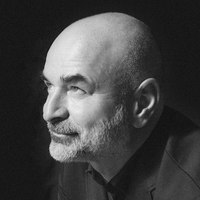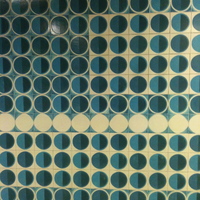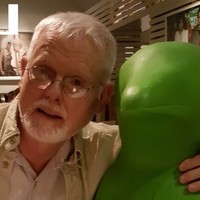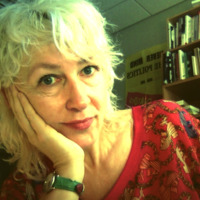
Perdita Phillips
Perdita Phillips is a contemporary artist who integrates her interests in environmental thought and the science of ecology into installations, digital works, photographs, walking and sound art. She has pondered pollen, written an encyclopaedia about termites, worked with bowerbirds, made a mountain and tumbled down storm drains. She is currently Activating Regional Collections Artist Residency at the Museum of the Goldfields with Art on the Move and Art Gallery of Western Australia Regional Exhibition Touring Boost funding.
Recent writings include Follow the water chapter in C. Bates & K. Moles Living with water: everyday encounters and liquid connections ((2023, Manchester University Press), Lithic Love for The Architectural Review (2022, https://www.architectural-review.com/essays/lithic-love), Seeping, maintaining, flooding and repairing: how to act in a both/and world (2022, Swamphen: a Journal of Cultural Ecology), fossil III for the Lost Rocks project (2019, A Published Event, Hobart) and Postcards from the Underground: Walkshopping as Relationing Otherwise. Journal of Public Pedagogies. 4, 127-13 (Neimanis, & Phillips).
Phillips has curated a number of exhibitions and is founder and co-editor at Lethologica Press. She curated the online exhibition Tectonics: bringing together artistic practices united by lithic thinking beyond human scales as part of Ngā tohu o te huarere: Conversations beyond human scales conference (2021). In 2022 she coedited Vol 8 of Swamphen: A Journal of Cultural Ecology (Particular Planetary Aesthetics) and was editor of CSPA Quarterly journal issue 36 Both/And featuring 19 artists from Australia and around the world.
She was part of We Must Get Together Some Time, a collective slow art project with 10 other Australian artists, the underfoot collaboration and will be exhibiting in the Indian Ocean Craft triennial with the Melange group in 2024.
In 2010 she organised, convened and curated Unruly ecologies: biodiversity and art symposium for SymbioticA and her practice based PhD thesis fieldwork/fieldwalking (2007) was selected as the top three abstracts in Leonardo Abstracts Service Database.
Current questions in her practice include how extractivism, geoasethetics and lithic love might interact (part of the both/and conundrum), how to bring together the urgency of biodiversity loss with the unruliness of ecosystems, and in what way can the seduction of materiality be integrated into new media works?
Phillips welcomes all sorts of collaboration across the arts and sciences. She envisages exploring the potential subject matter of lo-fi animations, fire in tropical savanna ecosystems, collaborating on text/art projects and creating a visual cartobiography of rocks in book form.
(and yes, she has wide interests)
Address: PO Box 747
Fremantle WA 6959
AUSTRALIA
Recent writings include Follow the water chapter in C. Bates & K. Moles Living with water: everyday encounters and liquid connections ((2023, Manchester University Press), Lithic Love for The Architectural Review (2022, https://www.architectural-review.com/essays/lithic-love), Seeping, maintaining, flooding and repairing: how to act in a both/and world (2022, Swamphen: a Journal of Cultural Ecology), fossil III for the Lost Rocks project (2019, A Published Event, Hobart) and Postcards from the Underground: Walkshopping as Relationing Otherwise. Journal of Public Pedagogies. 4, 127-13 (Neimanis, & Phillips).
Phillips has curated a number of exhibitions and is founder and co-editor at Lethologica Press. She curated the online exhibition Tectonics: bringing together artistic practices united by lithic thinking beyond human scales as part of Ngā tohu o te huarere: Conversations beyond human scales conference (2021). In 2022 she coedited Vol 8 of Swamphen: A Journal of Cultural Ecology (Particular Planetary Aesthetics) and was editor of CSPA Quarterly journal issue 36 Both/And featuring 19 artists from Australia and around the world.
She was part of We Must Get Together Some Time, a collective slow art project with 10 other Australian artists, the underfoot collaboration and will be exhibiting in the Indian Ocean Craft triennial with the Melange group in 2024.
In 2010 she organised, convened and curated Unruly ecologies: biodiversity and art symposium for SymbioticA and her practice based PhD thesis fieldwork/fieldwalking (2007) was selected as the top three abstracts in Leonardo Abstracts Service Database.
Current questions in her practice include how extractivism, geoasethetics and lithic love might interact (part of the both/and conundrum), how to bring together the urgency of biodiversity loss with the unruliness of ecosystems, and in what way can the seduction of materiality be integrated into new media works?
Phillips welcomes all sorts of collaboration across the arts and sciences. She envisages exploring the potential subject matter of lo-fi animations, fire in tropical savanna ecosystems, collaborating on text/art projects and creating a visual cartobiography of rocks in book form.
(and yes, she has wide interests)
Address: PO Box 747
Fremantle WA 6959
AUSTRALIA
less
Related Authors
Steve Jones
University of Illinois at Chicago
Andreas Philippopoulos-Mihalopoulos
University of Westminster
Colleen Morgan
University of York
Murat Germen
Sabanci University
Richard Kahn
Antioch University
E. Wayne Ross
University of British Columbia
Cyril Isnart
Centre National de la Recherche Scientifique / French National Centre for Scientific Research
Pier Giuseppe Monateri
Università degli Studi di Torino
David Seamon
Kansas State University
Claire Bishop
Graduate Center of the City University of New York
InterestsView All (418)










Uploads
Papers by Perdita Phillips
In this guest editorial note, we write in the wake of the ravages of climate crisis fires in Australia, as well as the borderless COVID-19 pandemic. We flesh out the project in its beginnings above, and introduce eleven papers and three visual portfolios of art research in practice that respond to our provocations before and after the Auckland conference. Collectively these scholarly and aesthetic works consider, trace, and respond to affective encounters of the particular and the planetary in the capricious spaces of the Anthropocene-in-the-making.
Termites, social insects, superorganism, archive, environmental art, art and science, insensible, strange kinship, groundswell, indifference, environmental procrastination
Animal Studies Journal, 5(1), 23-47.
Patricia Tarrant, Shiva Amir-Ansari, Nic Compton, Simon Gilby, Denise V Brown, Sally Stoneman, Lorraine Spencer Pichette, Angelo Caranna, Beverley Iles, David Small, Vanessa Wallace, Eva Fernández, Tracey Hart, Denise Pepper, Criss Sullivan, Dianne Souphandavong, Anna DeLaney, Andrew Nicholls, Richard Foulds, Karin Wallace, Robyn Pickering, Stuart Elliott, Perdita Phillips
The ways in which artists have worked with geological data is also a rich area for identifying the relationship between digital and material cultures. Many artists working with this subject are crossing boundaries and testing out the liminal spaces between the virtual and the real. Instead of accepting, or even creating, binary oppositions this paper will examine how virtual and material spaces are not oppositional but connected and communicated through creative practice for the earth sciences.
This presentation will provide a short overview of theoretical links between visualisation and geology, mineralogy and crystallography, highlighting historically significant examples. It will include a discussion of themes being explored in the work of interdisciplinary artist, Perdita Phillips whose project, The Sixth Shore is exploring the geological formations and the natural environment at Lake Clifton, in the Yalgorup National Park, Western Australia. Phillips works with spatial sound, presenting immersive sound environments in galleries and in situ (using GPS technology). How connections are made back to the material world and the consequences of meshing the visual and the sonic will be analysed and discussed."
The ways in which artists have worked with geological data is also a rich area for identifying the relationship between digital and material cultures. Many artists working with this subject are crossing boundaries and testing out the liminal spaces between the virtual and the real. Instead of accepting, or even creating, binary oppositions this paper will examine how virtual and material spaces are not oppositional but connected and communicated through creative practice for the earth sciences.
This presentation will provide a short overview of theoretical links between visualisation and geology, mineralogy and crystallography, highlighting historically significant examples. It will include a discussion of themes being explored in the work of interdisciplinary artist, Perdita Phillips whose project, The Sixth Shore is exploring the geological formations and the natural environment at Lake Clifton, in the Yalgorup National Park, Western Australia. Phillips works with spatial sound, presenting immersive sound environments in galleries and in situ (using GPS technology). How connections are made back to the material world and the consequences of meshing the visual and the sonic will be analysed and discussed.
In this guest editorial note, we write in the wake of the ravages of climate crisis fires in Australia, as well as the borderless COVID-19 pandemic. We flesh out the project in its beginnings above, and introduce eleven papers and three visual portfolios of art research in practice that respond to our provocations before and after the Auckland conference. Collectively these scholarly and aesthetic works consider, trace, and respond to affective encounters of the particular and the planetary in the capricious spaces of the Anthropocene-in-the-making.
Termites, social insects, superorganism, archive, environmental art, art and science, insensible, strange kinship, groundswell, indifference, environmental procrastination
Animal Studies Journal, 5(1), 23-47.
Patricia Tarrant, Shiva Amir-Ansari, Nic Compton, Simon Gilby, Denise V Brown, Sally Stoneman, Lorraine Spencer Pichette, Angelo Caranna, Beverley Iles, David Small, Vanessa Wallace, Eva Fernández, Tracey Hart, Denise Pepper, Criss Sullivan, Dianne Souphandavong, Anna DeLaney, Andrew Nicholls, Richard Foulds, Karin Wallace, Robyn Pickering, Stuart Elliott, Perdita Phillips
The ways in which artists have worked with geological data is also a rich area for identifying the relationship between digital and material cultures. Many artists working with this subject are crossing boundaries and testing out the liminal spaces between the virtual and the real. Instead of accepting, or even creating, binary oppositions this paper will examine how virtual and material spaces are not oppositional but connected and communicated through creative practice for the earth sciences.
This presentation will provide a short overview of theoretical links between visualisation and geology, mineralogy and crystallography, highlighting historically significant examples. It will include a discussion of themes being explored in the work of interdisciplinary artist, Perdita Phillips whose project, The Sixth Shore is exploring the geological formations and the natural environment at Lake Clifton, in the Yalgorup National Park, Western Australia. Phillips works with spatial sound, presenting immersive sound environments in galleries and in situ (using GPS technology). How connections are made back to the material world and the consequences of meshing the visual and the sonic will be analysed and discussed."
The ways in which artists have worked with geological data is also a rich area for identifying the relationship between digital and material cultures. Many artists working with this subject are crossing boundaries and testing out the liminal spaces between the virtual and the real. Instead of accepting, or even creating, binary oppositions this paper will examine how virtual and material spaces are not oppositional but connected and communicated through creative practice for the earth sciences.
This presentation will provide a short overview of theoretical links between visualisation and geology, mineralogy and crystallography, highlighting historically significant examples. It will include a discussion of themes being explored in the work of interdisciplinary artist, Perdita Phillips whose project, The Sixth Shore is exploring the geological formations and the natural environment at Lake Clifton, in the Yalgorup National Park, Western Australia. Phillips works with spatial sound, presenting immersive sound environments in galleries and in situ (using GPS technology). How connections are made back to the material world and the consequences of meshing the visual and the sonic will be analysed and discussed.
A short fictionella that starts with thombolites and finishes with the decimation of Banksia Woodlands on the Swan Coastal Plain. A mediation on CaCO3, when fossils are not and when history and the future needs revision(ing). You will discover living fossils and quorum sensing, the story of Tennant’s Cabinet, pseudofossils, the Leedermeg, future fossils and lost worlds. This book was part of the Lost Rocks Project by A Published Event
Photography with an eye for symbolism and hint of narrative, prose filled with visual acuity and flurries and flakes of inventiveness. There is a tangible synergy here between text and image, giving rise to “dissolved aspirations”, depth…past mourning” and the “notes of ages”. ‘A simple rain’ is a book to linger over, a book to savour.
Kevin Gillam (award-winning poet)
Glance’s poetry and Phillips’s images – spiritually intelligent, spacious and honest responses to this austere and shapely northern wilderness, and to each other’s work – teach us how to see again, less simply but more clearly: into our own and each other’s hearts and into the architecture of this world of places.
Mark Tredinnick (author and poet, winner Montreal Poetry Prize)"
Contemporary artist Perdita Phillips’ (Fremantle) photographs, doodles and sketches range from covert photography from within museums around the world, to tracking bowerbirds in the Kimberley. Poets Michael Farrell (Melbourne), Graeme Miles (Hobart), Nandi Chinna (Fremantle) and writer Nyanda Smith (Perth) cover subjects ranging from watching birdwatchers, politics, fatherhood, to having a haircut."
Non-urban areas can offer intense and specific experiences with heightened materiality and direct engagement with nonhuman agents. This was borne out in the fieldwork undertaken in the project. However the artworks created are also set in contrast to the work of other walking artists such as Hamish Fulton and Richard Long that are often based on sublime wilderness experiences. Based on my experiences I formulated and applied the concept of ‘ordinary wilderness’: much of one’s time in the field is involved in pragmatic and bodily encounters. Some of the aesthetic experiences are local and ephemeral. Wildness and the delight of wonder are more appropriate than the fear and awe of the sublime. fieldwork/fieldwalking draws together threads from sources as diverse as recent scientific ecology, Ric Spencer’s (2004) conversational aesthetics and non-representational theory in human geography to make art that questioned representational strategies and explored an expanded model of artworks where the relationships between the artist, the audience, the environment and the material art object are of equal importance.
A significant issue was how to creatively transform the experience of elsewhere (the field) into artworks in a gallery. In the sound art walk To Meander and back (strange strolls, Moores Building Contemporary Art Gallery (MBCAG), 2005) the strategy was to fold and imbricate the walkingcountry, the gallery in Fremantle, and the space in-between together. This artwork also sought to reconcile the ‘emptiness’ of Euro-Australian belonging by encouraging via sound and silence an understanding of place that is more living, changing and performative.
Other artworks included Zoo for the Species at the National Review of Life Art (Midland, 2003) and works in the solo exhibitions Four Tales from Natural History (Perth Institute of Contemporary Art, 2004), Semi (Spectrum Project Space/Kurb Gallery, 2004) and fieldwork/fieldwalking (MBCAG, 2006).
Keywords: science and art, walking, fieldwork, place, belonging, nonhuman, feral, wildness, wonder, sound art, conversational aesthetics, non-representational theory, processes of silence, the walkingcountry, Kimberley, Australia, site-specificity, FutureNatural.""
cultural symbol points towards our apparent attraction to the ‘dark side’ where polluted environmental conditions make for ‘sexy’ contemporary art. Disengagement with the consequences of individual or collective behaviours can be seen both within and outside of environmentally conscious thought. To counter this tendency of retreating from disaster and ‘battening down the hatches,’ I mobilise resilience, complexity and contingency in my visual arts practice. In February 2013 I completed a solo project called fast:slow:complex that brings together waste and wastelands, disaster and recovery. Drawing from process-based and socially engaged art practice, specific parallels between personal and societal consumption are linked by combining exploration of the urban wild of abandoned lands near the artist’s home, with a personal reassessment of the deluge of things central to modern consumer lifestyles. A central visual motif in this project is the tropical cyclone as a natural and devastating force and as something that is changing its character as part of global warming. The critical question under consideration is, within the shadow of critical environmental conditions, whether destructive change can lead to productive developments. The paper invites an aesthetics of action in the face of the inevitable uncertainties inherent in an ecological worldview.
The aim of the InConversation exhibition overall was to bring together teams of three or more collaborators. Collaborators had to be from a different discipline or profession, in an attempt to work through the difficulties of transdisciplinarity.
The ((Pollen)) project began with a mail art exchange. So far the project has generated letters (c.f. “love letters” to nonhuman worlds) and other material exchanges, as well as a short video/performance about Canola in Western Australia. Most of what we created as part of the collaboration couldn’t be included in the InConversation exhibition and plans are underway to bring the works together as a whole in 2015.
Inconversation was a cross-disciplinary/cross-art form collaborative exhibition held at Spectrum Project Space 9 to 24 October 2014. Works by the ((pollen)) collective were shown in the abbreviated form of pollen sampling tubes containing text, prints or thumb drives of video works. A digital print was created that mapped the collaborative process. A collaborative response text titled - collaboration is airborne - was written for the exhibition catalogue.
This was followed up with a second panel series: "Encounters with and within the Anthropocene: Speculating on Particular-Planetary Aesthetics." Convenors: Boscacci, Phillips and McIntyre.
This event was a full day of three separate sessions with nine papers by the following ten speakers:
Associate Prof. Janine Randerson, Auckland University of Technology, Auckland.
Prof. Heather Galbraith and Raewyn Martyn, Massey University, Wellington.
Christopher Houghton, University of South Australia, Adelaide.
Heather Hesterman, RMIT University, Melbourne.
Rob Kettels, Curtin University, Perth.
Maria O'Toole, Massey University, Wellington.
Kelly Lee Hickey, Victoria University, Melbourne.
Nicola Dickson, Independent Researcher, Canberra.
Leighton Upson, Independent Researcher/ Massey University, Wellington.
SEE THE FULL PROGRAM PDF FOR ALL ABSTRACTS.
Here are our two Introductions to our panels of artist-researchers, natureculture writers, curators, art historians and environmental humanities scholars:
"Affective Encounters, Shadow Traces, and Resonant Naturecultures in the Anthropocene: Particular-planetary aesthetics in the feminist ecosocial turn.
Convenors: Louise Boscacci, Perdita Phillips, Sally Ann McIntyre.
Listen. There. A Southern Boobook Owl is calling in the fresh dark. It is 6:58 pm, 9 June 2019. She reminds us that the work of art in the Anthropocene is under interrogation by contemporary artists, theorists and historians. New collaborations across the emerging open-field of the postconventional arts and humanities are creating alternative critical frameworks to engage with: the human is more-than-human and the social is an ecosocial domain in this age of extinction and climate change.
How are artist-researchers in Australia and Aotearoa New Zealand responding to the impingements and implications—the effects and affects—of the Anthropocene-in-the- making? This panel highlights and explores the affective encounter as a vital waymaker of contemporary art praxis and action. Here we name, make, listen, think and intervene with three instances of particular-planetary aesthetics that emerge from the feminist ecosocial pivot towards local, embodied and affect-engaged practices that also trace and make planetary connections. Each begins with a bodily encounter, or an encounter-exchange. Through multispecies conversations and resonances we listen to the faint signals of extinct New Zealand birds in the noise of history, lost traces re-collected from encounters with colonial-era ornithological collections re-figured as ‘minor’ memorials and re-sited within their original landscapes (McIntyre); trace, wit(h)ness and sound shadow ecologies of zinc entangled with extractive colonisation of Country in northern Australia, in the here and now (Boscacci); and follow the water down mountains to the sea, as the rocks, water, weeds and humans of Albany deal with seeping, maintaining, flooding, and repairing (Phillips)."
and
"Encounters with and within the Anthropocene: Speculating on Particular-Planetary Aesthetics. (Call For Papers)
Convenors: Louise Boscacci, Perdita Phillips, Sally Ann McIntyre
Listen. A Southern Boobook Owl is calling in the fresh dark. It is 6:58 pm, 9 June 2019. She is heard but not seen. She reminds us that the work of art in the Anthropocene continues to be interrogated by contemporary artists, writers, theorists and historians. In this age of extinction and climate-change, many are working to expand alternative critical frameworks and modes in which the human is more-than-human and the social is an ecosocial domain.
How are artist-researchers in Australia and Aotearoa New Zealand responding to the push and pull—the effects, affects and implications—of the Anthropocene-in-the-making? This follow-on panel explores the bodily encounter as a vital waymaker of contemporary art praxis and action. We situate this in a developing ‘field’ of particular-planetary aesthetics that emerges from feminist ecosocial thinking and pivots towards local and affect-engaged practices. We delve into diverse contemporary practices that trace and make planetary connections and ecologies of relations in multispecies naturecultures: connections and intersections that can be unknown, unpredictable or provocative; speculations, narratives or poetic reveals. Papers by the convenors will detail encounters with colonial-era ornithological collections, shadow ecologies of zinc mined in northern Australia Country, and seepages and flows of water through granite and swamp lands.
We invite twenty-minute papers or presentations on art practices, collaborations, alliances, or speculations that take the pulse of what is happening now in the capricious spaces of attunement to the Anthropocene-in-the-making. Proposals for alternative presentations in media and methods other than a scholarly paper are welcome."
CITATION (please cite if you use this work).
Boscacci, Louise, Phillips, Perdita and McIntyre, Sally Ann 2019. ‘Affective Encounters, Shadow Traces, and Resonant Naturecultures in the Anthropocene: Particular-planetary aesthetics in the feminist ecosocial turn,’ in Ngā Tūtaki – Encounter/s: Agency, Embodiment, Exchange, Ecologies, Art Association of Australia and New Zealand (AAANZ) Conference 3-6 December 2019, University of Auckland, Tāmaki Makaurau, Aotearoa New Zealand.